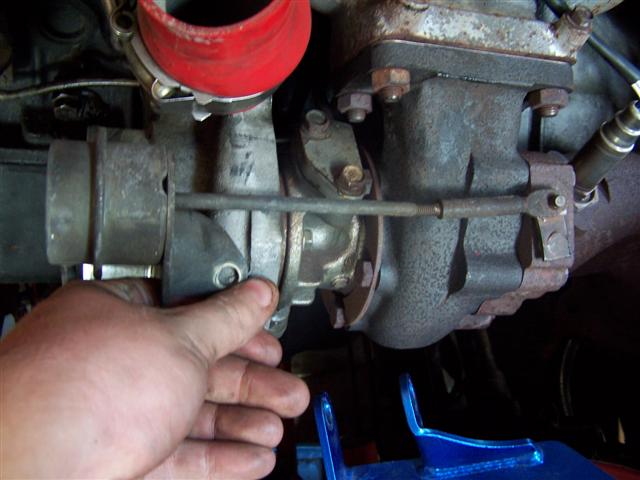
"Wastegate" simplified: A wastegate exists to bleed off pressure from the exhaust before the turbocharger in order to control the turbine speed and hence boost pressure. As long as the wastegate is able to flow a high enough volume of air to limit flow past the turbine, it will be effective in controlling boost pressures. If the wastegate is overwhelmed with air, the turbocharger will continue to build boost in a very much culminate fashion as the additional air feeds the system. This is commonly called "boost creep" and is very undesirable as it can lead to excessive boost pressures and engine damage.
Mounting the stock wastegate actuator to an aftermarket turbo compressor housing:
The wastegate actuator is not the wastegate itself. It is only a component of the integral/internal wastegate system which Z31 are equipped with from the factory. The stock (and most) actuator mounts to the compressor housing and serves to open the internal wastegate flapper itself via a rod and lever combination. There is an air diaphragm and spring in the actuator itself which is connected to a boost source on the engine. This is perhaps the simplest (and easiest to engineer) system available for controlling boost pressure. When the pressure in the diaphragm of the wastegate actuator reaches or exceeds the pressure from the spring, the rod will move. The strength of the spring ultimately determines how much boost pressure the turbocharger makes.
The stock actuator can be mounted to an aftermarket compressor housing using a small piece of angle aluminum or steel. It is a relatively simple part to make using basic tools perhaps you have in your garage: A drill, hacksaw, small nuts and bolts, and paint. The stock actuator will not have anywhere to mount on a aftermarket compressor housing, you will have to make a simple bracket for it to mount as shown in these pictures. Be sure to account for frame rail clearance:

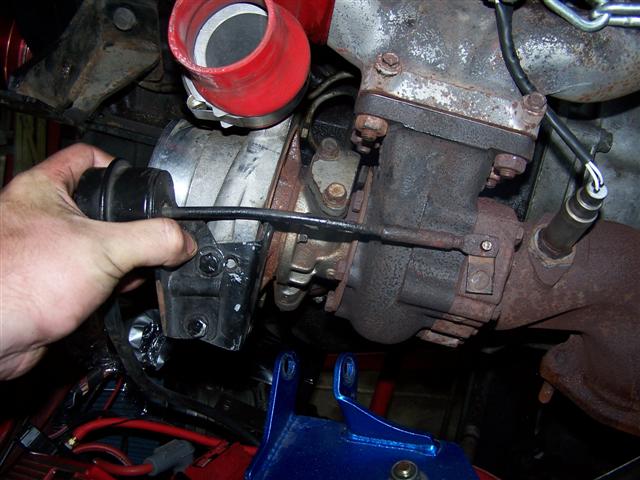
Secured using one of the bolts from the compressor housing:
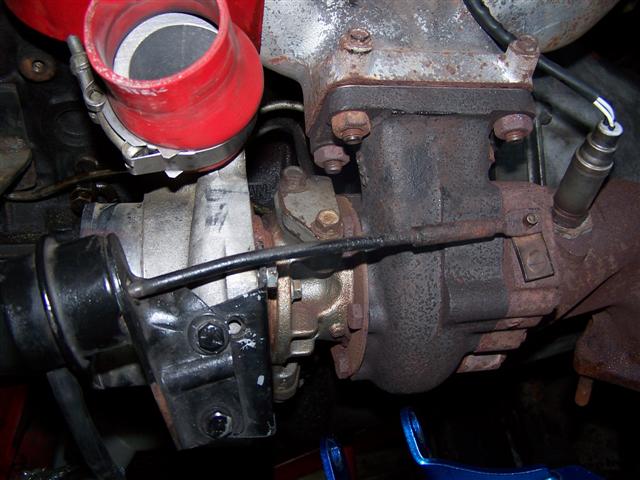
Supplemented with $2 throttle return springs from NAPA or otherwise, the stock actuator can hold and maintain 20+PSI boost on an aftermarket turbo with ease. Hook one end of spring through where the pin was:
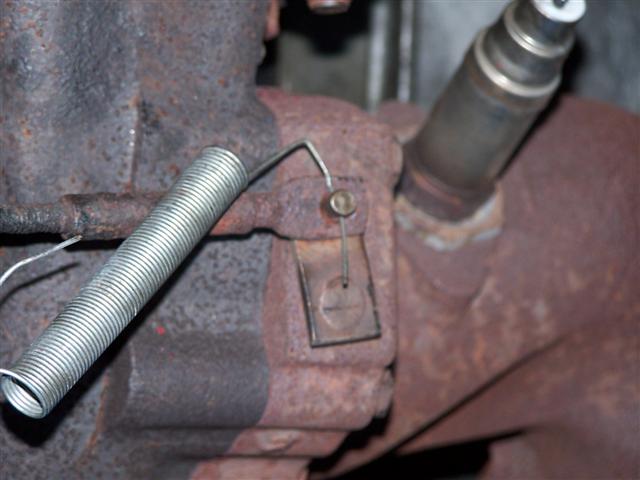
And the other end to a convenient location where it will stay secured. I drilled an additional hole in the bracket:
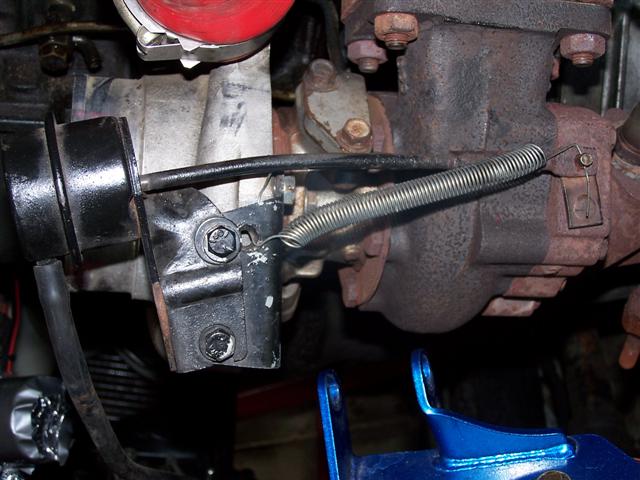
Completed view from front (after a couple years of use):
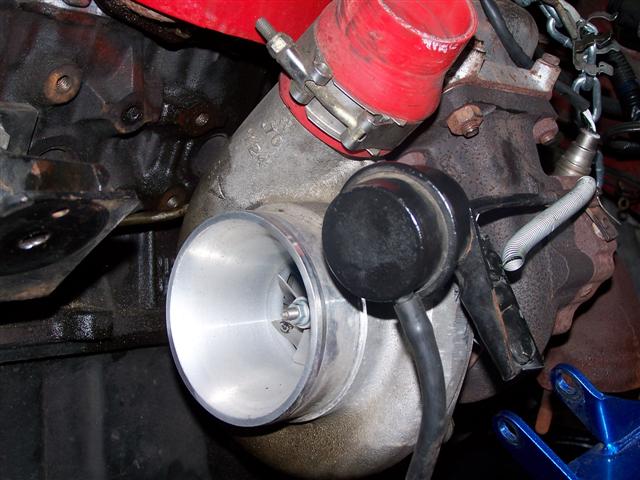
This actuator hence opens the wastegate flapper door in the exhaust elbow shown here (note this elbow is ported):
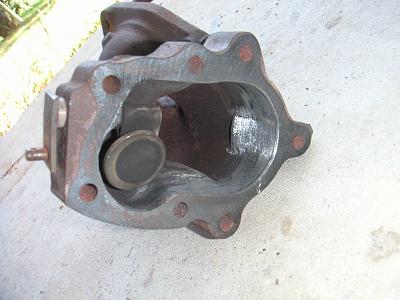
Notice the black area on the flapper itself indicating the flapper is actually quite a bit bigger than the wastegate port in the turbine housing shown here (also note how large the stock wastegate port is even compared to the aftermarket housing on the right:

With some light porting, the stock housing's port can be made more than adequate for greatly increased boost pressures. This port was ported out only 2mm and flowed enough for my car to control boost pressures up to 24PSI without any boost creep on a stage 3 turbine/ 60-1 compressor combination.
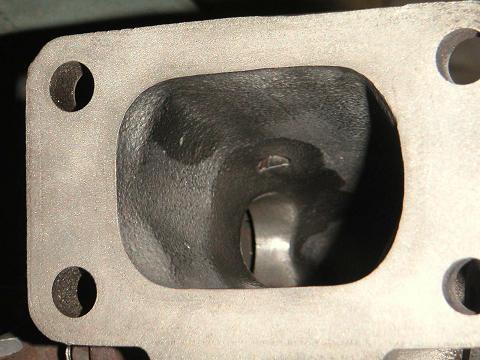
Aftermarket wastegate actuators:
Frequently used in-place of a stock actuator when upgrading a turbocharger, these offer both easier adjustability and higher-boost settings than an non-modified stock actuator. These are for the people who want to spend money in exchange for the niceness and convenience factors of life.
Many "universal" varieties are available with an adjustable rod, various springs, and mounting hardware for around $100. Shown is the ATPturbo.com unit (pictures thanks to Graffz):
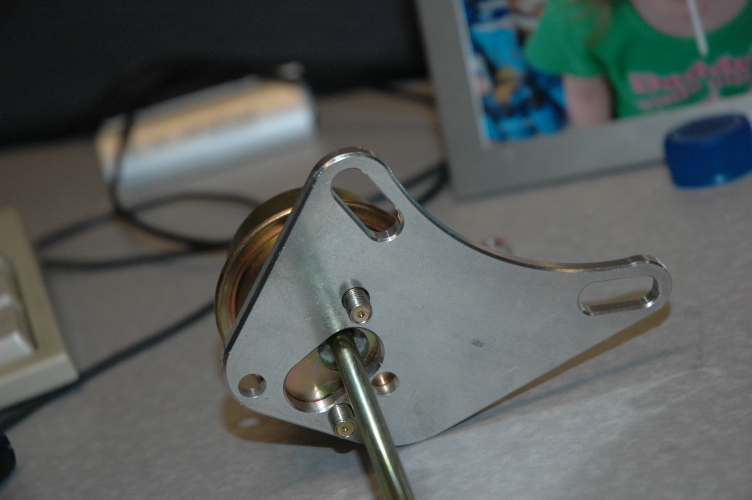
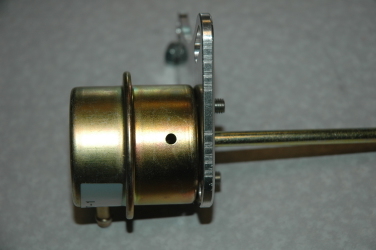
See also: External wastegates